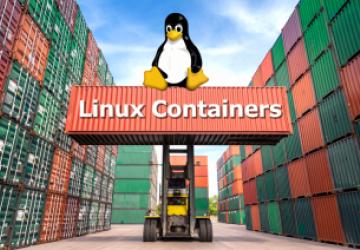Linux Containers Unleashed: A Comprehensive Guide to the Technology Revolutionizing Modern Computing

Definition of Linux Containers
Linux Containers (LXC) are a lightweight virtualization technology that allows you to run multiple isolated Linux systems (containers) on a single host. Unlike traditional virtual machines, containers share the host system's kernel, providing efficiency and speed.
Brief History and Evolution
The concept of containerization dates back to the early mainframes, but it was with the advent of chroot in Unix in 1979 that it began to take a recognizable form. The Linux Containers (LXC) project, started in 2008, brought containers into the Linux kernel and laid the groundwork for the popular tools we use today like Docker and Kubernetes.
Importance in Modern Computing Environments
Linux Containers play a vital role in modern development, enabling efficiency in resource usage, ease of deployment, and scalability. From individual developers to large-scale cloud providers, containers are a fundamental part of today's computing landscape.
Linux Containers (LXC) ExplainedArchitecture
Containers vs. Virtual Machines
While Virtual Machines (VMs) emulate entire operating systems, including the kernel, containers share the host kernel. This leads to a significant reduction in overhead, making containers faster and more efficient.
The Kernel's Role
The Linux kernel is fundamental to containers. It employs namespaces to provide isolation and cgroups for resource management. The kernel orchestrates various operations, enabling containers to run as isolated user space instances.
User Space Tools
Tools like Docker, Kubernetes, and OpenVZ interface with the kernel to manage containers, providing user-friendly commands and APIs.
Features
Isolation
Containers provide process and file system isolation, ensuring that applications run in separate environments, protecting them from each other.
Resource Control
Through cgroups, containers can have resource limitations placed on CPU, memory, and more, allowing precise control over their utilization.
Network Virtualization
Containers can have their network interfaces, enabling complex network topologies and isolation.
Popular Tools
Docker
Docker has become synonymous with containerization, offering a complete platform to build, ship, and run applications in containers.
Kubernetes
Kubernetes is the de facto orchestration system for managing containerized applications across clusters of machines, providing tools for deploying applications, scaling them, and managing resources.
OpenVZ
OpenVZ is a container-based virtualization solution for Linux, focusing on simplicity and efficiency, particularly popular in VPS hosting environments.
Use Cases and ApplicationsDevelopment Environments
Containers offer reproducible development environments, ensuring consistency across different stages of development and deployment.
Continuous Integration/Continuous Deployment (CI/CD)
CI/CD pipelines benefit from containers' speed and consistency, allowing for reliable, rapid iterations.
Cloud Computing
Cloud providers leverage containers to offer scalable, isolated environments for various services, from simple applications to complex data processing tasks.
High-Performance Computing
In high-performance computing (HPC), containers provide isolation and resource control, ensuring optimal usage of resources.
Microservices Architecture
Containers are crucial in microservices architecture, where individual components are isolated, developed, deployed, and scaled independently.
How to Get Started with Linux ContainersInstallation
Requirements
To start with Linux Containers, a modern Linux distribution is needed with kernel support for namespaces and cgroups.
Installing LXC
sudo apt-get install lxc
Or for Docker:
curl -fsSL https://get.docker.com | sh
Installing Other Tools
Additional tools like Kubernetes can be installed depending on specific needs and use cases.
Creating and Managing Containers
Basic Commands
- Creating a container:
lxc-create -t ubuntu -n mycontainer - Starting a container:
lxc-start -n mycontainer - Stopping a container:
lxc-stop -n mycontainer
Configuration
Containers can be configured with specific resource limits, network settings, and more using various configuration files.
Networking and Storage
Containers can be linked through virtual networks, and persistent storage can be managed through volumes.
Security Considerations
Security in containers involves proper isolation, resource limitation, secure communication, and following best practices like keeping container images updated.
Pros and Cons of Using Linux ContainersAdvantages
Efficiency
Containers are more resource-efficient than VMs, as they share the host's kernel.
Flexibility
Containers can be easily moved, replicated, and scaled, providing great flexibility in development and production.
Scalability
Containers' lightweight nature makes it possible to quickly scale applications up or down, meeting demand.
Disadvantages
Security Concerns
Isolation in containers is not as robust as in VMs, leading to potential security risks if not managed properly.
Potential Complexity
While containers themselves are simple, managing complex containerized systems can become challenging, especially at scale.
Case Studies and Real-world ImplementationsMajor Companies Utilizing Containers
Companies like Google, Netflix, and Amazon rely heavily on container technologies for their various services.
Success Stories
Many startups have leveraged container technology to scale rapidly, such as Airbnb and Spotify.
Challenges and Lessons Learned
Implementing containers is not without challenges, including security, orchestration complexity, and cultural shifts in development practices.
Future Trends and DevelopmentsContainer Orchestration
Orchestration tools are becoming more sophisticated, offering greater automation and intelligence in managing large containerized systems.
Edge Computing
With the growth of IoT, containers are being used in edge computing, enabling efficient, isolated environments on edge devices.
Integration with Other Emerging Technologies
Containers are likely to play a key role in integrating with technologies like AI, blockchain, and more.
ConclusionSummary of Key Points
Linux Containers have revolutionized the way applications are developed, deployed, and managed. With advantages in efficiency, flexibility, and scalability, they are a foundational technology in modern computing.
Encouraging Readers to Explore and Experiment with Containers
Whether a seasoned developer or new to the field, the world of Linux Containers offers exciting opportunities to learn, grow, and innovate.
Final Thoughts on the Importance of Linux Containers in the Modern Technological Landscape
Linux Containers are not merely a trend but an essential part of the current and future technological landscape, enabling companies and individuals to be more agile, efficient, and creative.








